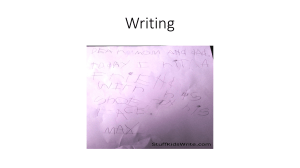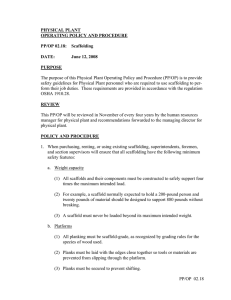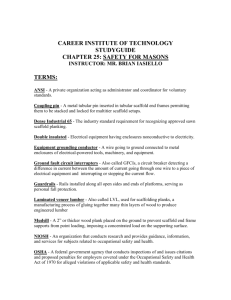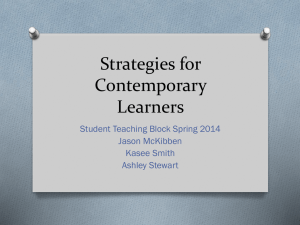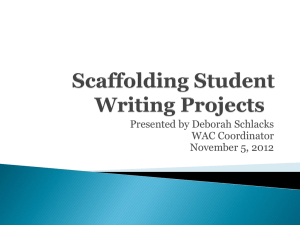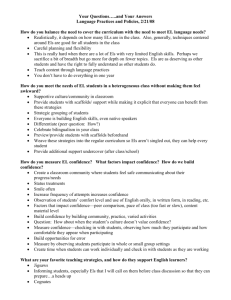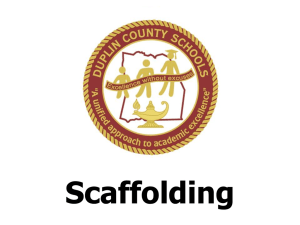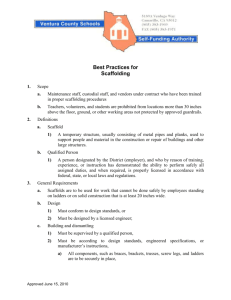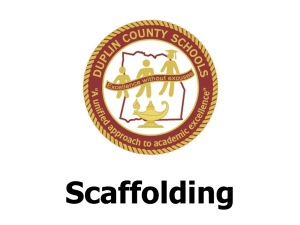Scaffolding Language for ELLs: A Staff Meeting Presentation
advertisement
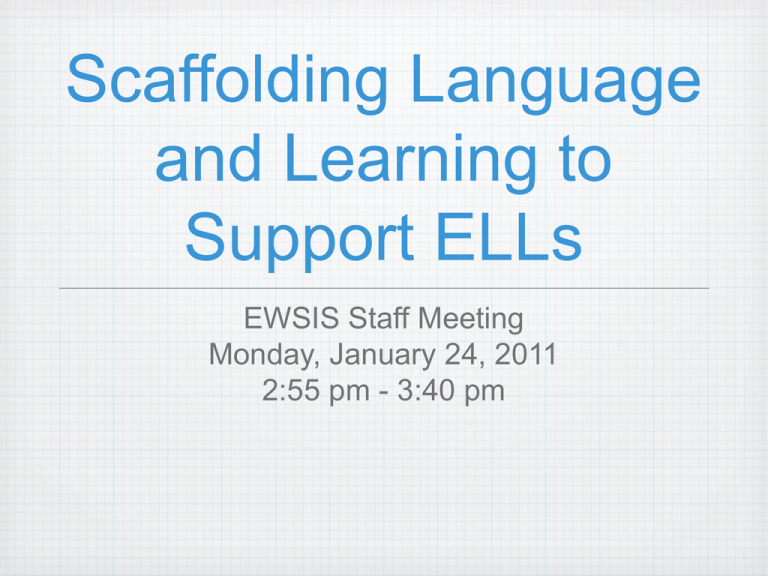
Scaffolding Language and Learning to Support ELLs EWSIS Staff Meeting Monday, January 24, 2011 2:55 pm - 3:40 pm Connecting Activity Read the bulleted items on the checklist Check off the items you do regularly Count up the items you checked off Raise your hand when the number of items you checked off is called Scaffolding* to Support R-W-L-S & Language scaffolding: (a) temporary support - visual, written, oral, tactile – that allows a learner to complete a task; (b) without the scaffold, the learner would not be able to do the task independently; • (c) scaffolding is gradually removed as learners develop skills, knowledge, language and can do tasks independently As a family, EW can support our ELLs in and out of the classroom by scaffolding. Together Everyone Achieves More! • Office staff can simplify speech, restate, and speak at a slower speed when addressing an ELL. • Non-teaching staff can scaffold oral and written materials; create word walls for key words used in their work; use pictures and charts to support delivery of important information; reinforce information with tactile demonstrations. • Administration can provide oral, visual, written, and tactile scaffolds modeling for staff and students. Today’s PD: What are we doing/can we do as a school to scaffold learning for ELLs? Purpose: to discuss (1) how we are scaffolding language and learning; (2) how we are providing access to information; (3) how we are maintaining high expectations for all learners Process: review, provide overview, engage in content area teams to discuss the how, why, and what of scaffolding a text or student task Product: content area team charts - possibilities for scaffolding a student task or text Scaffolding 101! Visual scaffolds: pictures, word walls, charts, timelines, calendars... Written scaffolds: sentence frames and starters; outlines; graphic organizers; word banks; step-by-step directions; how ‘to’ flowchart... Oral/Auditory scaffolds: simplification, repetition, elaboration, slower speed, avoidance of slang and idioms, use of music... Tactile scaffolds: realia, manipulatives... How do I decide what and how to scaffold? The what: content & information; from vocabulary to procedures... The how: depends on the level of language proficiency of your learners; background knowledge of your learners; what you already know your learners can do independently; and what the task is asking a learner to know and do How can content and meaning be visually represented to provide learners access to the content? pair word with picture and provide prior to reading a text with that term, e.g.: cuneiform writing artifact How can written scaffolds support learners? simplified text can be more comprehensible; excerpted text can be less challenging; written structures model, show how, ... written supports take many forms Oral/Auditory Scaffolds... introduce new terms using choral repetition to provide model of pronunciation and have students practice rephrase challenging ideas by using simpler language or elaborating by adding more information that defines or explains and by giving examples Tactile Scaffolds... gestures realia What scaffolding will support our ELLs? TABLE ACTIVITY: Your task as a T.E.A.M.: Review the ELL profile: proficiency level, etc. Review the task or text Review what students need to know and be able to do to complete task/text successfully Create a charted table with scaffolding ideas for each category (if applicable) Present charted ideas to the whole group Reflecting Orally & In Writing • ORALLY: What are you taking away from today’s PD? • ORALLY: How will you use what we did today to support the ELLs in our school? • In Writing: Please take a few minutes to complete the FourSquare Reflection
